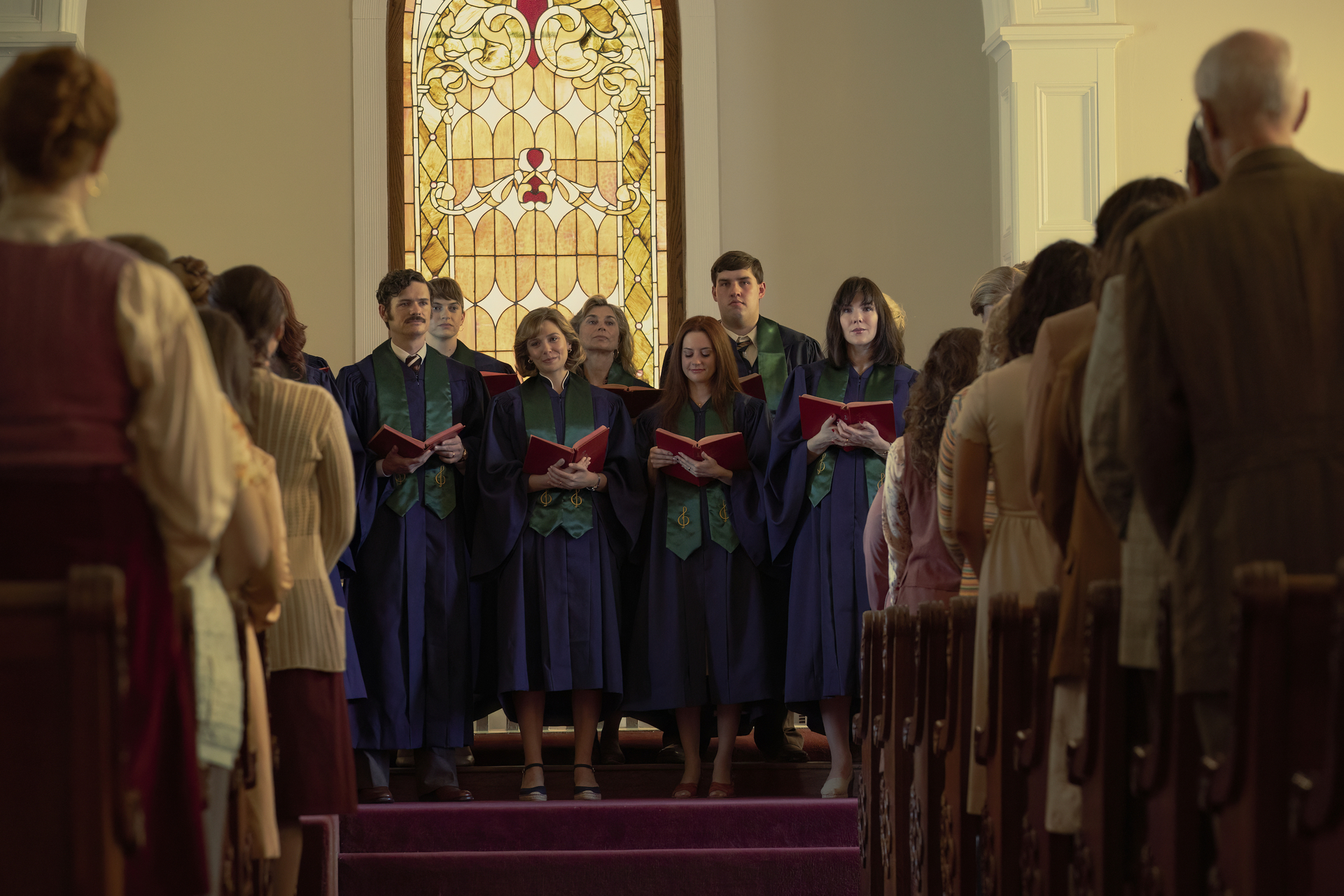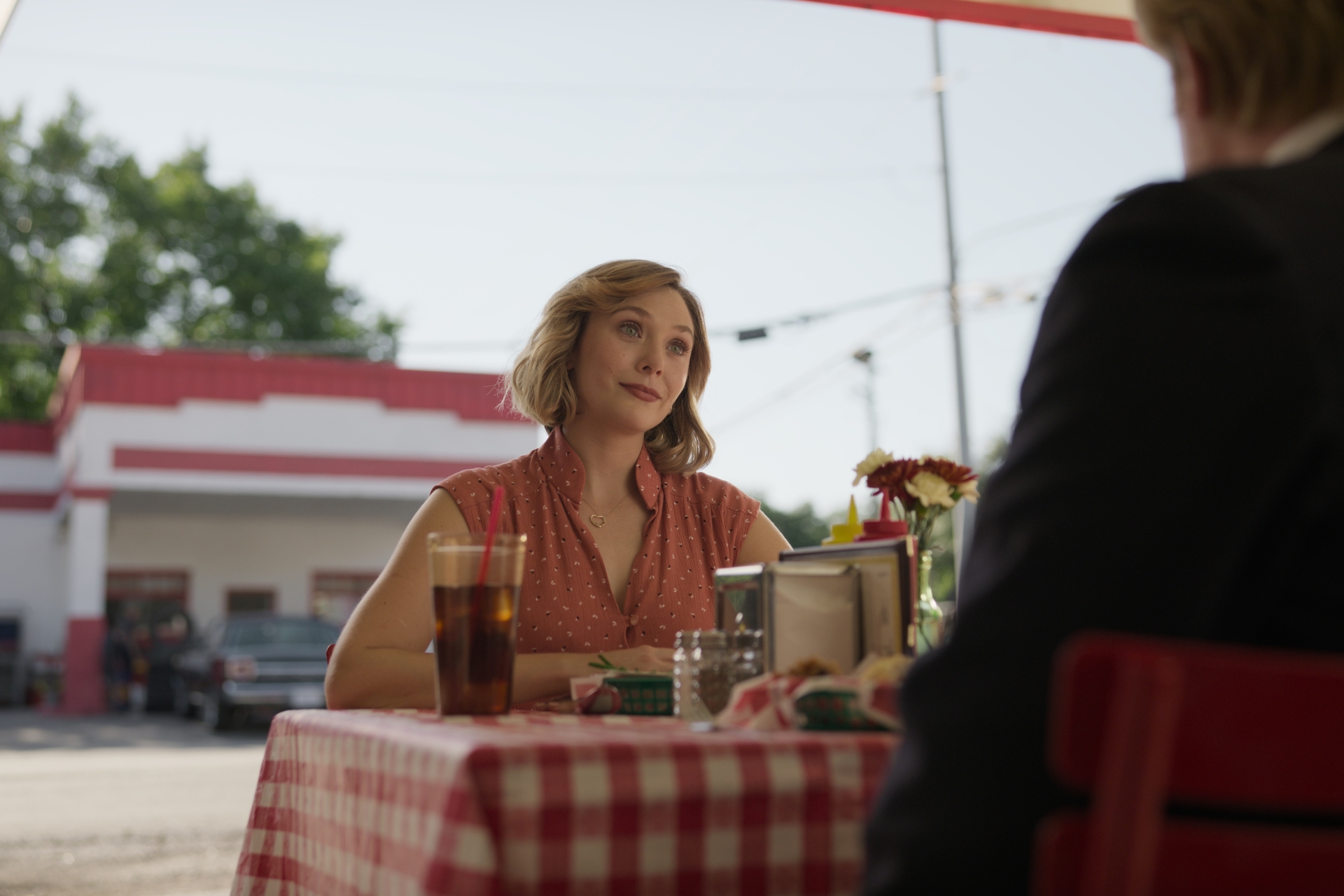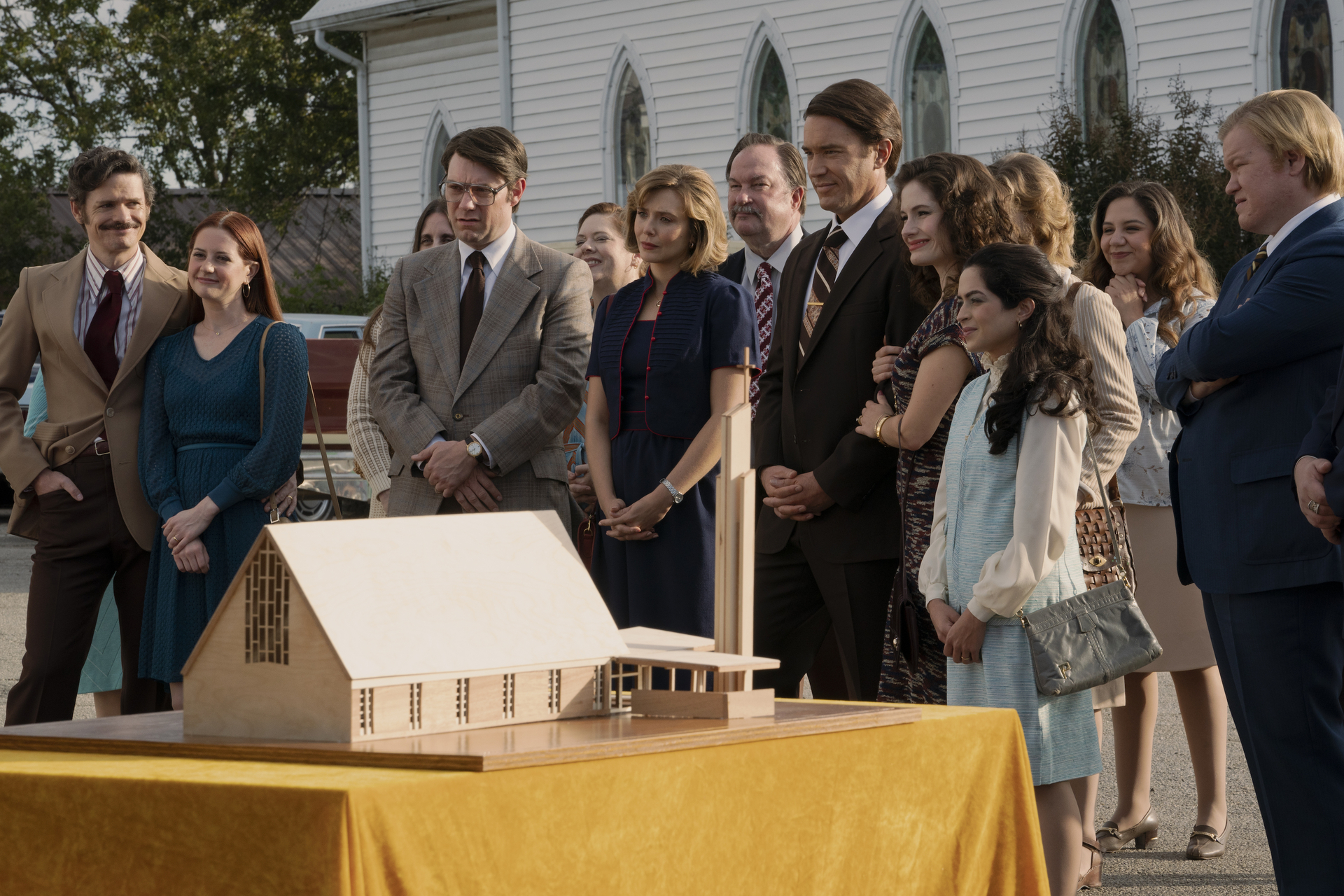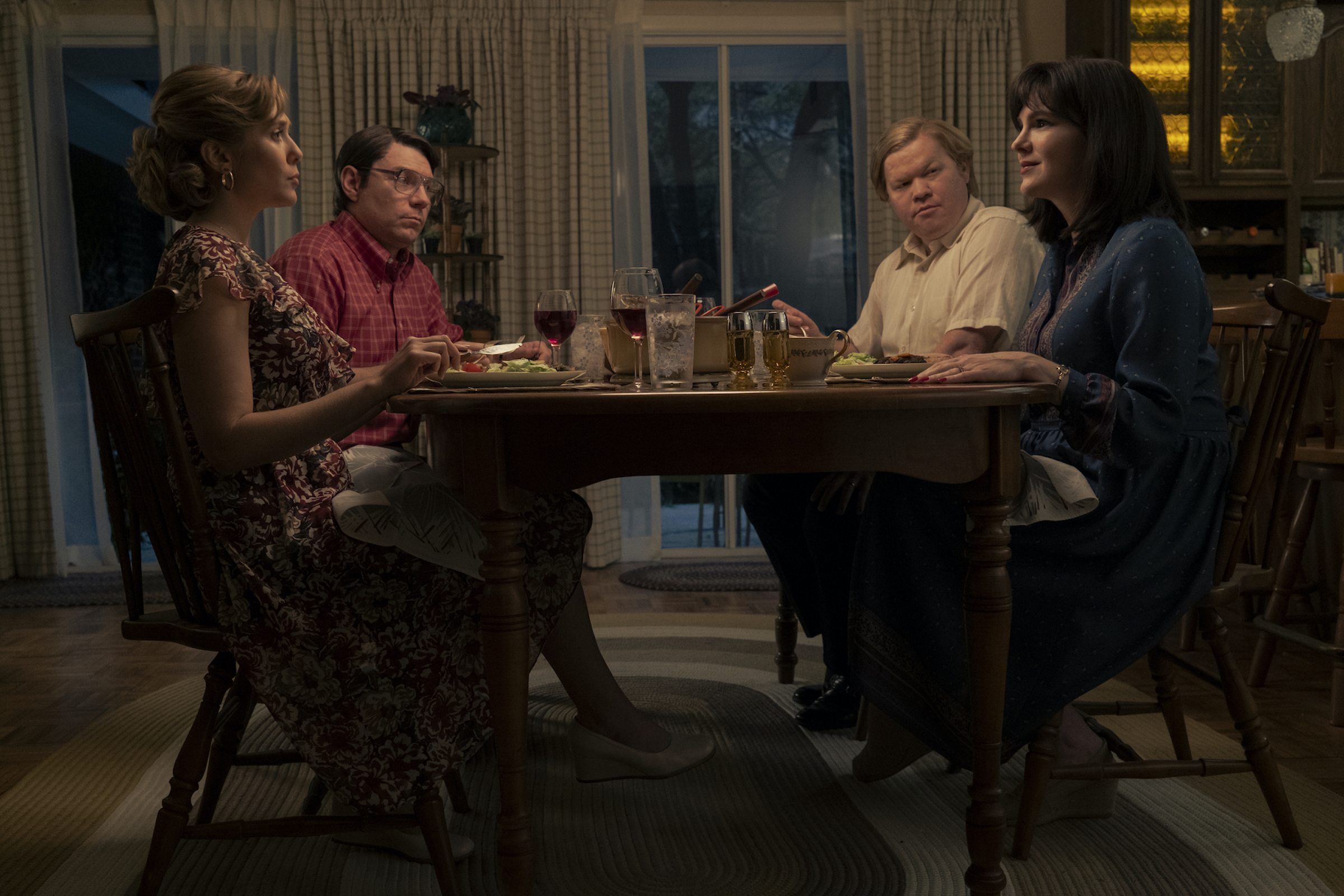Warning: This post contains spoilers for Love & Death
In Elizabeth Olsen’s first television series since the 2021 Disney+ hit WandaVision, the formidable actor plays the notorious Candy Montgomery—a real woman who killed the wife of the man she was having an affair with in 1980. The HBO Max limited series Love & Death, which is based on Jim Atkinson and Joe Bob Briggs’ 1984 book Evidence of Love: A True Story of Passion and Death in the Suburbs, follows Olsen as Montgomery, a God-fearing housewife beloved by her small Methodist community in Collin County, Tex. before the turn of events that would upend many lives.
The first three episodes of the gripping limited series are now out on HBO Max. Here’s everything you need to know about the true story behind Love & Death and how close the show hews to reality.
What happens in Love & Death?

When we first meet Candy, she has an infectiously sweet personality that makes her, by all appearances, a great mother to her kids and wife to her husband, Pat Montgomery (Patrick Fugit). Candy and her husband seem to have some marital woes, and it’s clear that she feels less desired by her husband than she wishes to be. So she sets out to have an affair with Allan Gore (Jesse Plemons), a longtime friend who is also in her group of church friends and is married to Betty Gore (Lily Rabe).
The pair’s love affair heats up quickly, and their rendezvous become more frequent, so they decide to stop seeing each other. But Betty catches on and confronts Candy about the affair. Betty’s rage takes over, and she tries to kill Candy with an axe, but Candy fights back and kills Betty. At first, Candy tries to circumnavigate the judicial process, lying and not turning herself in immediately, but the police eventually catch up with her, and Candy is put on trial for the murder of Betty Gore.
The trial became a national sensation because of the ethical murkiness of the killing, with questions involving childhood traumas and self-defense. In the show, Candy’s trial attracts hordes of reporters, photographers, and spectators—to the point that the judge requests the trial be moved to a bigger courthouse. In the end, in the series as in real life, Candy is found not guilty. Still, given that her name had been tainted by the trial, she decides to move her family out of their hometown to Georgia.
Does Love & Death stay true to the original story of Candy Montgomery?

The series reminds viewers at the end of each episode that it is based on a true story, but that it is “a dramatization of actual events. Dialogue, scenes, and some events have been modified or created for dramatic purposes.” Love & Death is the third adaptation made using this case as a subject, following the 1990 CBS movie A Killing in a Small Town and the 2022 Hulu miniseries Candy starring Jessica Biel. As Rolling Stone’s TV critic Allen Sepinwall wrote in his review of the show, “If you’ve seen Candy, you not only already know all the details, but will be shocked by how many of the beats of the story are presented in identical fashion,” noting that what feels like a “half-dozen scenes in each installment were practically word-for-word.”
TIME critic Judy Berman writes in her review that Love & Death provides new dimensions for these characters that weren’t previously seen in the Hulu series, or other series about rich women in living in idyllic surburbia. “What sets Love & Death apart from its predecessor, and so many other superficial, ripped-from-the-headlines murder shows (Dahmer—Monster, The Thing About Pam, The Serpent), is [creator David E. Kelley’s] refusal to reduce real people to cartoon killers or weirdos or fools.” She continued to write that it’s a “welcome correction” from his series following Big Little Lies, like The Undoing to Nine Perfect Strangers, which have “suffered from similarly broad characterizations.”
Where is Candy Montgomery now?

At the end of the last episode, right before the credits roll, there are updates for each of the main characters. The last scene in the series shows Candy and Pat moving out of Collin County to Georgia. The updates say that the couple divorced shortly after they moved to Georgia and that she began working as a family therapist. At one point, the text says, she practiced with her daughter, Jenny, and they focused on teen and adult depression. According to People, she is still alive and resides in Georgia.
The TV we’re watching right now:
What happened to everyone else?

The series also states that Pat still lives in Georgia and continued to work in defense technologies. Allen remarried shortly after Betty’s death to the church organist, Elaine Williams. The two eventually got a divorce and Betty’s parents adopted her and Allen’s children. He got remarried again and now lives in Maine.
After helping Candy avoid prison, the updates at the end of the series says that Don Crowder (Tom Pelphrey), Candy’s attorney, ran for governor of Texas in 1986. He managed to secure 11% of the vote but ultimately lost the race to Mark White. A story published in the Dallas Observer reported that Crowder suffered from depression and his wife, Sheri, became concerned with his drinking and a DWI arrest. The series’ final update about Crowder states that in 1998, Crowder died by suicide due to a self-inflicted gunshot wound.
What drew the creators to this particular story?

In an interview with D Magazine, the show’s director, Lesli Linka Glatter, acknowledged that although people might already know the ending of the story, she was still interested in telling it. “This is about a Texas town and its characters,” she said. “I fell in love with all of them, but there’s also a deep hole inside of those characters. It was a mile wide and unfulfilled, so that intrigued me.” Glatter added, “The story was so juicy and the characters were complex and human. It’s not often you find a nostalgic, warm community series that ends with an axe murder.”
If you or someone you know may be experiencing a mental-health crisis or contemplating suicide, call or text 988. In emergencies, call 911, or seek care from a local hospital or mental health provider.
More Must-Reads from TIME
- Donald Trump Is TIME's 2024 Person of the Year
- Why We Chose Trump as Person of the Year
- Is Intermittent Fasting Good or Bad for You?
- The 100 Must-Read Books of 2024
- The 20 Best Christmas TV Episodes
- Column: If Optimism Feels Ridiculous Now, Try Hope
- The Future of Climate Action Is Trade Policy
- Merle Bombardieri Is Helping People Make the Baby Decision
Write to Moises Mendez II at moises.mendez@time.com